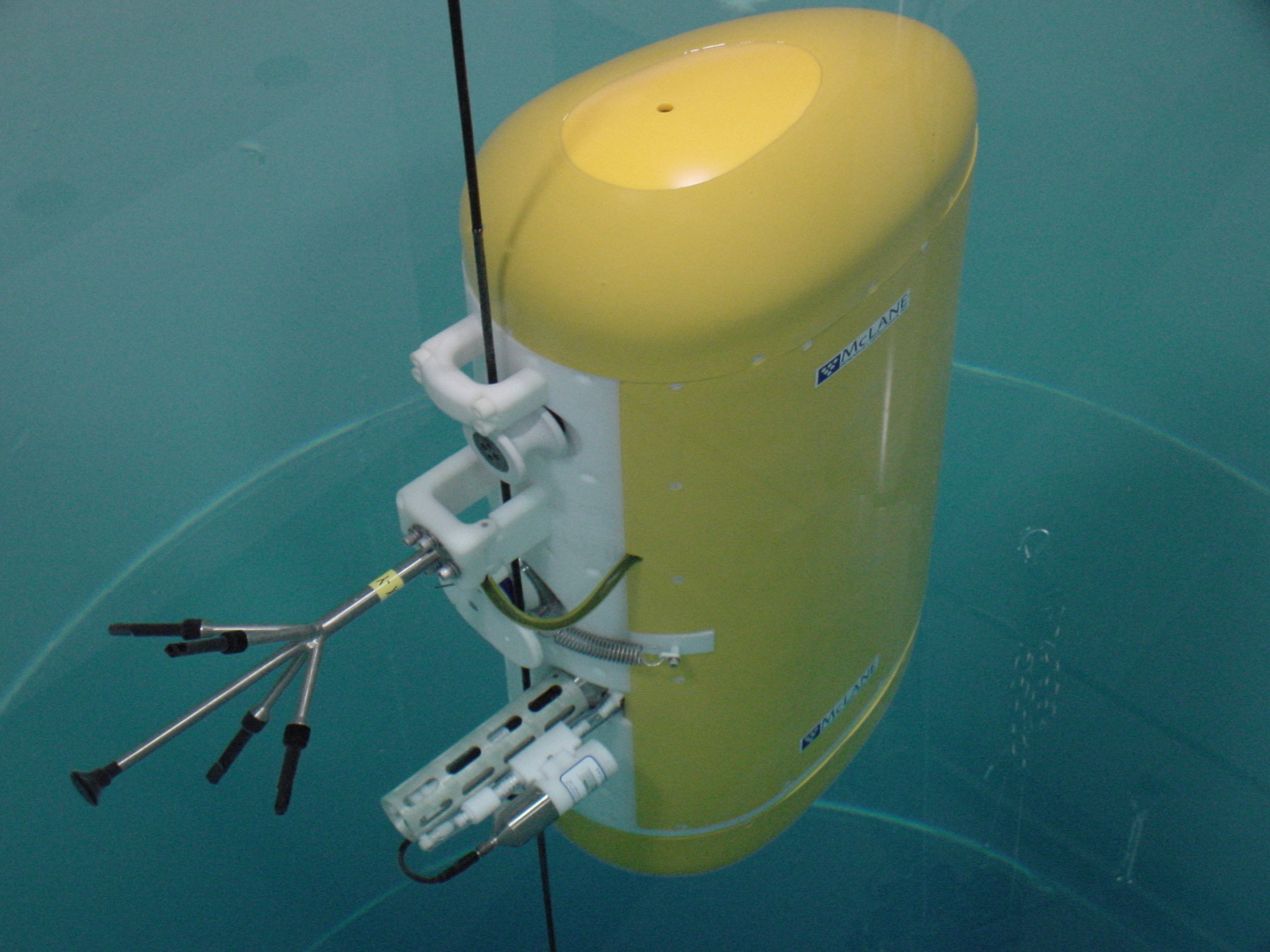McLane Research Laboratories Awarded Contract for OOI Wire Following Profiler

(Click to enlarge) A look at a Wire Following Profiler similar to what will be used for the coastal and global scale nodes component of the Ocean Observatories Initiative. (Photo Courtesy of McLane Research Laboratories)
(Washington, D.C.) – The Consortium for Ocean Leadership (OL) and Woods Hole Oceanographic Institution (WHOI) announced McLane Research Laboratories, of East Falmouth, Mass., will provide the Wire Following Profiler for the Coastal and Global Scale Nodes (CGSN) component of the Ocean Observatories Initiative (OOI) program.
WHOI, as implementing organization for the CGSN component of the OOI, awarded the $2.13 million contract for a period of 24 months.
“The capability to sample over the water column at the OOI moorings is a design goal driven by the ocean science community, and bringing this measurement tool on line moves us forward in development of this critical ocean observing capability,” said Robert Weller, WHOI Principal Investigator for the OOI CGSN. “These specialized profilers will provide observations to better understand key coastal and open ocean sites and will greatly enhance our ability to deliver reliable, high quality data on a sustained basis to the scientific community.”
Moored profilers are one of the primary measurement tools to obtain time series of the vertical profile of important variables in the oceans. In general, moored profilers consist of a suite of sensors that are raised and lowered through the water column on a regular basis. A wire following profiler is a platform which propels itself along the length of the mooring line holding the oceanographic mooring in place. This is in distinction to a winched profiler which uses a winch at a fixed depth to raise and lower a sensor package through the water column.
The moored profilers will be used to collect high resolution vertical profiles of water column properties on a regular basis and telemeter these data to shore. Their data will help fill in the space between fixed sensors located on moorings and on the bottom. Data will be transferred to shore in near real time. Commands from shore allow alteration of the sampling activities to optimize scientific return within power, bandwidth, and budgetary constraints.
The two types of wire following profiler used in OOI differ in their scientific mission and their area of deployment. The coastal wire following profiler is deployed in coastal regimes with water depths up to 500 meters. The global wire following profiler is deployed in the open ocean far from shore in waters as deep as 5200 meters. The coastal profilers are maintained biannually, while the global profilers are maintained annually and have a different scientific payload than the coastal profilers.
The OOI’s design includes four strategic high-latitude sites to implement global scale nodes to collect data in the Southern Ocean, southwest of Chile; Irminger Sea, southeast of Greenland; Argentine Basin, in the South Atlantic; and Station Papa in the North Pacific. The OOI’s coastal scale nodes are designed to provide sustained, but adaptable, access to complex coastal systems. The coastal observatory consists of the Endurance Array off the coast of Oregon and Washington and the Pioneer Array off the coast of New England.
The OOI, a project funded by the National Science Foundation (NSF), is planned as a networked infrastructure of science-driven sensor systems to measure the physical, chemical, geological and biological variables in the ocean and seafloor. As a fully integrated system, OOI will collect and disseminate data on coastal, regional and global scales. Through a unique cyberinfrastructure, OOI will make ocean observing data available to anyone with an internet connection. Greater knowledge of the ocean’s interrelated systems is vital for increased understanding of their effects on biodiversity, climate change, ocean and coastal ecosystems, environmental health and climate.
WHOI and its partners, Oregon State University and Scripps Institution of Oceanography are responsible for the OOI coastal and global arrays and their autonomous vehicles.
The OOI Program is managed and coordinated by the OOI Project Office at the Consortium for Ocean Leadership in Washington, D.C., and is responsible for construction and initial operations of the OOI network. Four Implementing Organizations are responsible for construction and development of the overall program. In addition to WHOI, the University of Washington is responsible for cabled seafloor systems and moorings. The University of California, San Diego, is implementing the cyberinfrastructure component. Rutgers, the State University of New Jersey, is responsible for the education and public engagement software infrastructure.
About the Consortium for Ocean Leadership
The Consortium for Ocean Leadership is a Washington, D.C.-based nonprofit organization that represents 99 of the leading public and private ocean research and education institutions, aquaria and industry with the mission to advance research, education and sound ocean policy. The organization also manages ocean research and education programs in areas of scientific ocean drilling, ocean observing, ocean exploration, and ocean partnerships.
For more information on the OOI please visit the OOI Website or follow us on Facebook.
For more information or interviews, contact:
Kerry G. Beck
Director of Communications, OOI
Consortium for Ocean Leadership
Office: (202) 787-1685
Mobile: (202) 538-0099
kbeck@oceanleadership.org
Stephanie Murphy
Public Information Manager
Woods Hole Oceanographic Institution
Office: (508) 289-3340
media@whoi.edu
